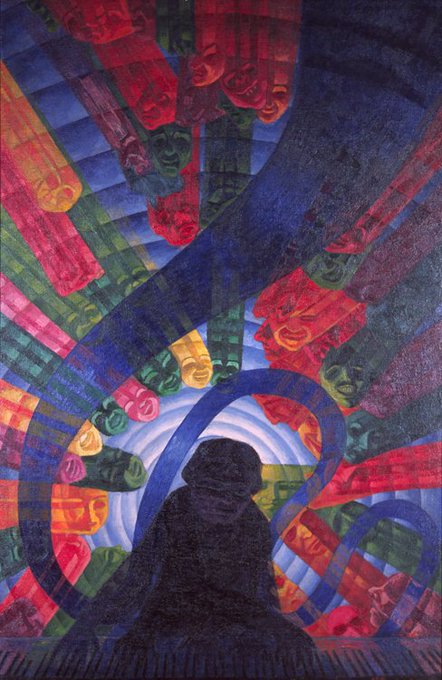Interested in examining the works of Giorgio Morandi and Filippo de Pisis?
Join us for our Adult Art Class with artist and curator, Sarah Kogan.
It will take place next Monday 26 February from 18.30-20.20.
Book your tickets on https://t.co/FKoGcf41zB
Inside #TheEnchantedRoom
Carlo Carrà, Rythms of Objects, 1911
In this painting the formal austerity of the Cubist aesthetic is combined with Futurist themes of movement, simultaneity and the interpenetration of planes.
Examining the works of Giorgio Morandi and Filippo de Pisis, artist Sarah Kogan will lead a class on tonal still life drawing, focusing on positive and negative space, subject matter, space and perspective.
Info&tickets: https://t.co/MqvFEjnfDD
This year we will succeed in breaking through the envelope and reach the planets. I invite you all to a banquet next New Year's Eve on the moon, where we will finally taste foods of a flavour unknown to our planet and unimaginable drinks! - Fillìa
Harmony of Propellers, c.1931
Gerard Dottori efficiently indicates the dynamic architecture of nature with a small number of pen strokes in his Study for Rising Forces.
Umberto Boccioni was born #onthisday in 1882.
https://t.co/1AgDZUBiP4
#TBT to our 2014 exhibition Gerardo Dottori: The Futurist View.
https://t.co/pi13nDEzZ3
Music (1911) by Luigi Russolo is an iconic example of Futurist art, a "pictorial translation" of "the complex of musical emotion". #MusicMW














